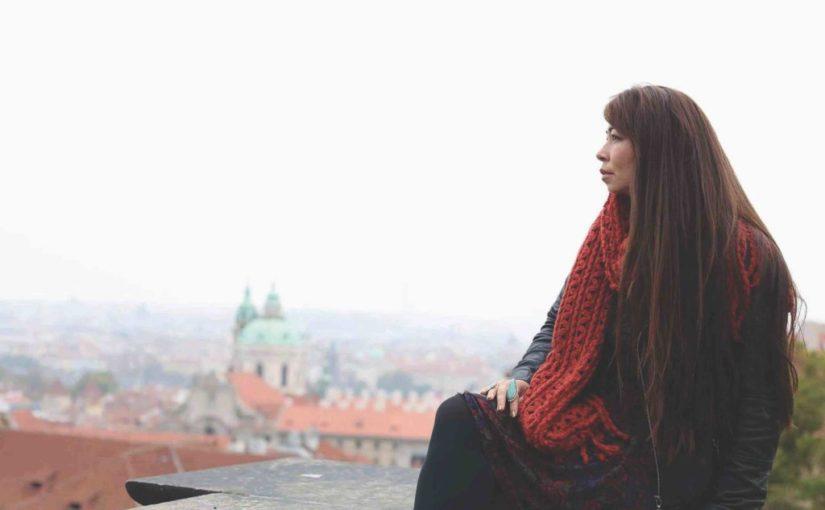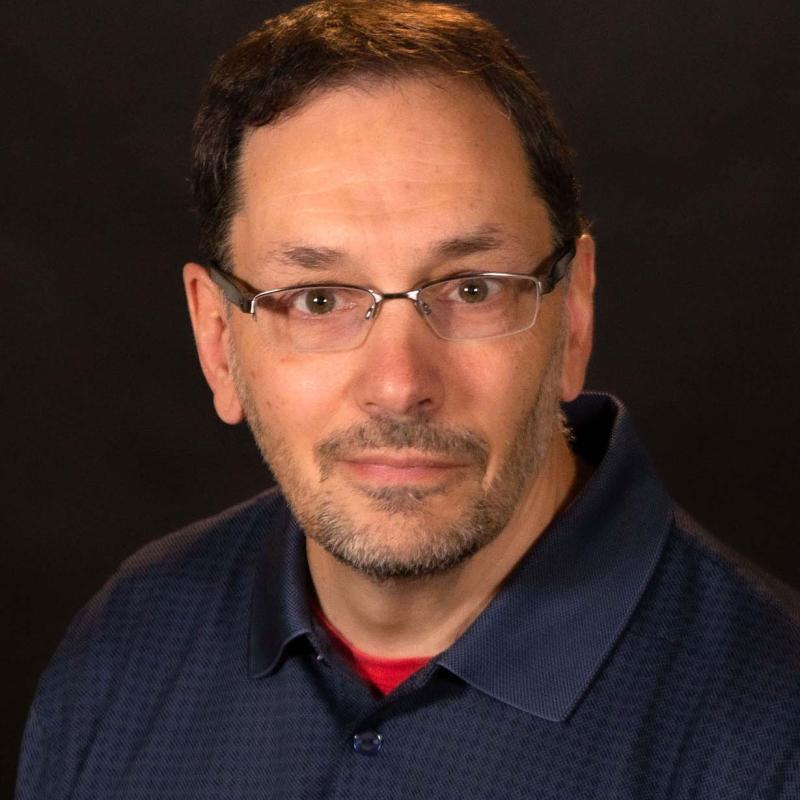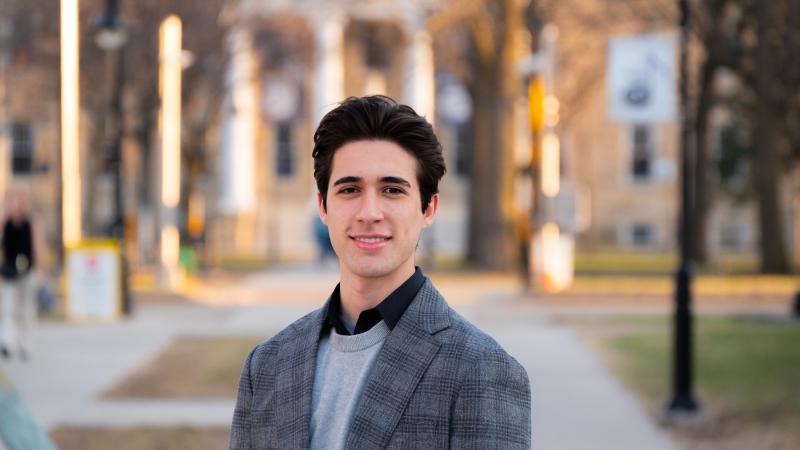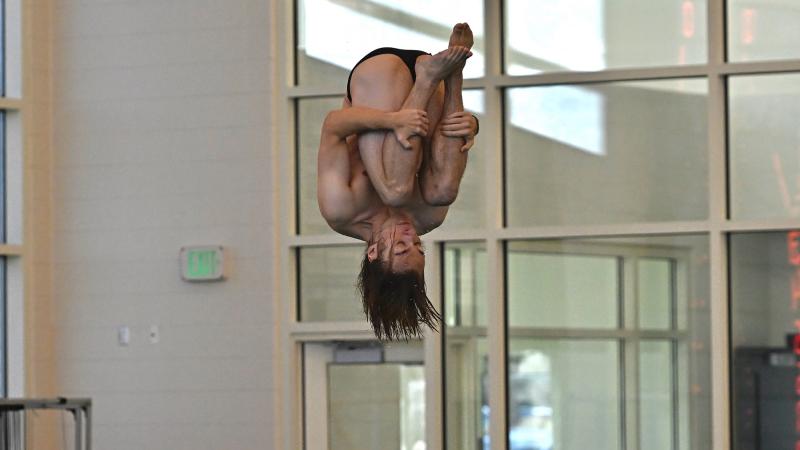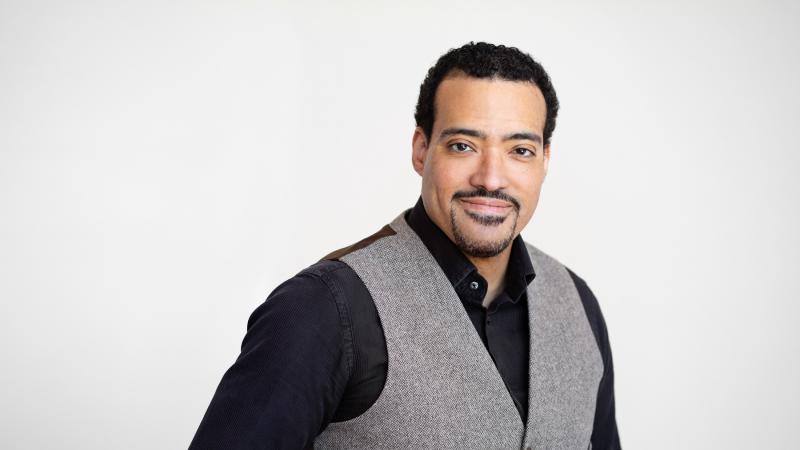Brigetta Miller calls it a historic moment for Lawrence University, a big step forward in the understanding of Native communities and the need to embrace and value the knowledge, history and contributions of indigenous people.
When Matika Wilbur, creator and director of Project 562, arrives on campus on Friday, April 5 for a week-long artist-in-residency — including the creation of a contemporary mural celebrating area tribal communities — and an April 11 convocation address at Memorial Chapel, it will be significant.
Significant for Native students and alumni. Significant for the 11 federally recognized tribes in Wisconsin. And significant for the university.
“I see this spring convocation as history unfolding before our eyes since it’s the first Native American woman who has been chosen as a university convocation speaker since the opening of the institution in 1847,” said Miller, an associate professor of music in the Lawrence Conservatory of Music and a member of the Stockbridge-Munsee (Mohican) Nation.
“Given the fact that our campus is on sacred Menominee ancestral homelands, I believe our ancestors are truly smiling down on this event. It’s a very big deal for us to be visibly represented in this way.”
Stories to tell
Wilbur, a visual storyteller from the Swinomish and Tulalip peoples of coastal Washington, has been traveling the country as part of Project 562, using photography and art installations to connect with tribal communities and help redirect the narrative of their history, their present and their future. The 562 is a reference to the number of federally recognized tribes in the United States at the time the project launched in 2012.
Wilbur sold most of her belongings, loaded her cameras into an RV and set out to document lives in tribal communities across all 50 states. Connecting to college campuses along the way has been a big part of her journey.
“We are in a very critical time that requires educators, administrators and college communities to create a more inclusive environment for Native American students,” Wilbur says in her Project 562 plan. “By engaging in this social art project, students will have the opportunity to, a) organize, b) have their voices heard on campus, and c) elevate the consciousness and encourage the social paradigm shift to acknowledge the contemporary indigenous reality.”
That’s music to the ears of Miller, a 1989 Lawrence graduate who teaches ethnic studies courses in Native identity, history, and culture and works with Native American students on campus as a faculty advisor to the LUNA (Lawrence University Native Americans) student organization.
This community — on campus and beyond — needs to know that Native culture is alive, vibrant, intelligent, resilient, and moving forward, she said.
“I learned of her work a few years ago,” Miller said of Wilbur. “I saw her mission. I’ve been an educator for many years, and when I saw the beauty of what she was doing, substituting the historical distortions and fixed images of the past for the truth about our people, raising visibility for the historic erasure that has happened, sharing the many parts of our culture that often don’t make it into the history books, that inspired me.
“Her message is that we are resilient and we are strong and that we’re reclaiming our own narrative. She’s really aiming to share that part of our story, as opposed to one that popular American culture often believes is dead or invisible. As indigenous people, we are interrupting the settler narrative of the past, embracing our present and ensuring the future for our children. We are moving, we are shaking, we are scholars, we are artists — the sky is the limit for us.”
Wilbur recently teamed with Adrienne Keene, a member of the Cherokee Nation, to launch a new podcast, All My Relations, now live on iTunes, Spotify and Googleplay. It’s an extension of Project 562 in many ways, aimed at exploring relationships and issues important to Native people.
“I see her as a change agent,” Miller said. “Heads are turning.”
A reflection of who we are
At Lawrence, in the week leading up to the convocation address, Wilbur will work closely with Native students and allies to bring the outdoor mural to fruition. They’ll start with a workshop on photography and the important role of art in social justice, focused on how they can document the lives of indigenous people ethically and respectfully.
A group of students will then join Wilbur on visits to nearby reservation lands, where they’ll meet with tribal members, take photos, and participate in a seasonal longhouse ceremony. They’ll use the photos in the creation of a collage that will form the core of a mural to be installed using wheat paste on the outside north wall of the Buchanan Kiewit Wellness Center.
The mural, a non-permanent installation expected to remain visible for two to five years, will be unveiled following the 11:10 a.m. convocation on April 11.
“It means a lot to me that this convocation and art installation will show the beauty and forward-thinking of our culture,” Miller said. “It means more than one can imagine for our current Native students. It’ll be the first time we’ve had contemporary Native American artwork on the side of one of our buildings. Our indigenous students will see themselves reflected back for the first time ever.”
In her convocation address, Wilbur will discuss Project 562 and takeaways from her interactions with Lawrence students, the visits to area tribal lands and the creation of the mural.
Beth Zinsli, an assistant professor of art history who chaired this year’s Public Events Committee, said the invitation to Wilbur is part of a rethinking of convocation.
“In addition to our excitement about bringing an indigenous woman to campus for this honor, the Public Events Committee was interested in expanding what Lawrence’s convocation series could be — does a convo have to be a single, stand-alone lecture, or can its significance extend beyond the speaker’s visit and have a more lasting and visible impact?” she said. “I think Matika’s residency and the mural will be an excellent example of this.”
The convocation will include a traditional Menominee flutist and an Oneida drum/dance group. There also will be an opening invocation spoken in the Menominee language by Dennis Kenote, chairman of the Menominee Nation Language and Culture Commission. That, too, is hopeful, a reflection of understanding and acceptance that hasn’t always been felt by Native communities on college campuses, Miller said.
“I hope this entire experience opens up the door to further meaningful conversations between cultures,” Miller said. “And I hope it attracts more Native students, faculty, and staff to our campus. I hope it raises visibility about the importance of the deeper cultural knowledge that indigenous people inherently bring to a college campus.
“I want Lawrence to be perceived as a welcoming place for Native students, families, and communities. We do welcome an indigenous presence here — students, faculty, local tribal members. Our doors are open to you. I want our people to know that.”
Spring Convocation
What: Convocation featuring Matika Wilbur, creator and director of Project 562, Changing the Way We See Native America
When: 11:10 a.m. April 11; unveiling of mural on campus to follow.
Where: Lawrence Memorial Chapel
Cost: Free
